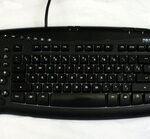In the first edition of this series, I examined a few key points that can be found in the program pages which might point out horses ready to perform at a high level. In this edition, will look for keys to the horses condition on racing night. I’ll also share a few angles that have been successful over the years and I’ll share my insight on some of the major harness tracks in North America.
A very big handicapping key for me is being able to be track side for the races. From watching harness horses for so many years, I’ve been able to spot a horse that looks very sharp just by watching the horse warm up. This is a big advantage that harness bettors have over T-bred players. Well before their race, a trainer will send a harness horse onto the track to jog a mile or 2. The horse will often jog clockwise around the track or in the opposite direction of the way the horse will race. Usually the horse will be allowed to go at his own leisurely pace and sometimes near the end of this workout, the trainer will turn the horse and allow it to pace or trot around the track counter-clockwise or in the direction that the race will take place. Harness horses know the what this change in direction means and often a horse will be allowed to go close to race speed. At this time, a horse that is ready to race well will show a keen observer a few hints in how the horse may race later that day. I have noticed very good horses that didn’t seem very interested in being on the track during their warm-ups, come back out later that day (or night) and race very poorly, despite being bet very well at the windows. At the same time, I have noticed horses that haven’t been performing well in recent races that looked great on the track and came back later that night to race well, despite being a long shot on the tote board. The more familiar you become with harness horses in general and more importantly, the warm up habits of an individual horse or horses, the more information you have to rely on when going to place a wager.
When I have a couple of angles on horses that are racing, I like to watch their warm ups for clues. Sometimes this means being at the track an hour or more before the first race, as trainers will normally never send a horse out for a workout within 40 minutes of the actual race. After a workout, a harness horse needs time to be walked and cooled down before he can ready to step foot back on the track to race. Usually the horse is given approximately 1 hour or more between workout and race time. Weather permitting, most tracks bring harness horses onto the track around 8 minutes before the race to loosen up and the horse is likely to walk, jog and sometimes show a quick burst of speed during this 8 minute period before the start of the race. Once again, during this time observing the horses can sometimes provide insight on the horses condition and interest in racing that night.
A couple angles that I have found that work well, along with solid workouts before the race is where a horse, racing in his/her normal class, has a disadvantage in post position or an outside post. The horse may be equal to the rest of the field for this race, but will have to work harder at some point to overcome his poor post position. If the horse looks very good on the track and is allowed to make a quick burst or 2 in his warm ups, the trainer may be preparing him to show early speed in the race and that that would tip me to keep a close eye on how this horse races this evening. My favorite angle is when a horse, with an outside post position, leaves shows early speed in the race and moves ahead of 3 or 4 horses to find a spot on the rail. If this horse comes back again in this race and improves his positioning again, this would be a horse a would be interested in wagering on the next time he steps foot on the track… even if he doesn’t do well at the end of the race. This type of horse may finish the race in 5th or 6th place and win his following start at long odds. Sometimes this type of horse will finish well and move up in class, another angle I have had success with. Often this horse will be overlooked at the betting windows in his next start against tougher horses. If this horse looks like he is within himself at this class level, a big payoff can be realized for the sharp handicapper.
Let’s quickly examine the types of tracks that harness horses race on. First there are half-mile tracks like Yonkers, Freehold and Northfield Park. On these tracks, horses are required to go around the track twice. The have to negotiate the turns 4 times during the race and these turns are much tighter than larger tracks, which benefit the horse with earlier speed and/or horses with inside post position because they won’t have to travel as far as the horses that have to come from behind. These horses will “save ground” by racing along the pylons and conserve energy to make their move late in the race.
Next is the 5/8ths track found at the Meadows, just outside Pittsburgh, Dover Downs and Pompano Park. The horse in these races start the race in the backstretch and have to negotiate 3 turns during the race. Inside post position isn’t as much of a big advantage on this type of track, as horse in the first 5 or 6 starting spots do well on the 5/8ths tracks. Normally the lead will change hands by the time the horses come out of the 1st turn and the race will settle down for the next 3/8ths of a mile before the action picks up. Quite often horses racing in the first 4 or 5 spots going into the final turn finish in the money at these venues.
At lastly are the 7/8th tracks of Woodbine and Mohawk Raceway in Canada and the mile tracks of the Meadowlands and Balmoral Park. On the larger tracks, you will often find many lead changes and the constant movement on some of the larger tracks often take horses out of contention. These tracks usually have races with large exotic payouts and are a challenge to both the novice and experienced handicappers alike. The size of these tracks are basically the same, but the way the tracks race is far different. Woodbine, for instance, tends to favor horses with early speed that can position themselves to go wire to wire or strike late in the mile, going past a tired leader. Horses that close well do much better at Mohawk, then at Woodbine and knowing this difference is a key to winning at each specific track. The racing style at the Meadowlands is completely different than those of the Canadian tracks. The lead is contested quite frequently at the BigM and in my opinion, it’s the toughest track in harness racing to win money as a bettor.
Once again, I cannot stress the importance of gathering your own information. All bettors are using the same programs to help make their decisions on who to bet. It’s your own personal observations about class, pace and how you perceive the horse to look on that particular day, that will aid you in being a successful bettor at the harness tracks. The more knowledge you have when going to the betting windows, the more successful you’ll be.
Good luck at the races!




